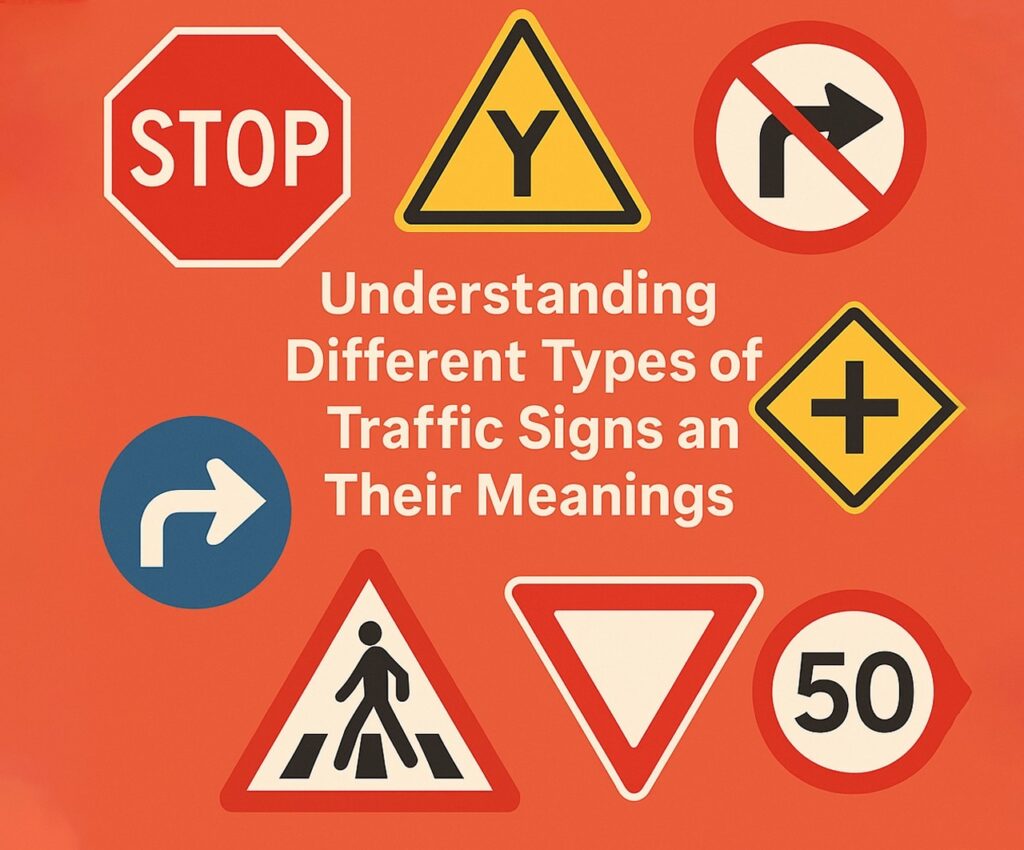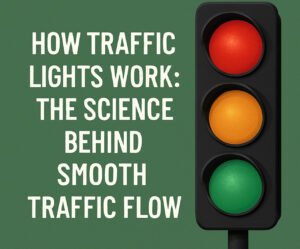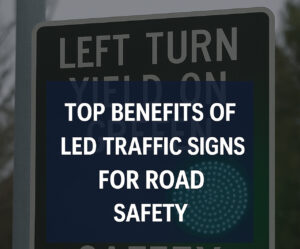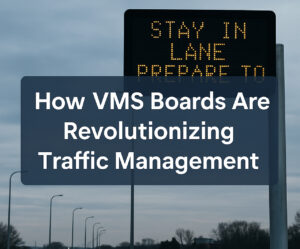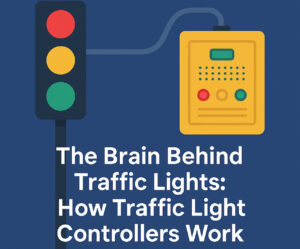When navigating through streets, roads, and highways, traffic signage plays a pivotal role in ensuring the safety of all road users. From road and traffic signs to traffic signals and signs, these visual cues provide critical information about speed limits, hazards, and directions, helping to keep the flow of traffic smooth and organized. In this article, we will break down the various types of traffic signs and what they mean to improve understanding of their importance in everyday driving. Know more..
The Importance of Traffic Signage
Before diving into the types of road and traffic signs, it’s important to recognize just how integral traffic signage is to our daily commute. These signs provide more than just instructions; they are designed to warn, inform, and guide drivers and pedestrians alike. By regulating the flow of traffic, they prevent accidents, reduce confusion, and keep roads organized.
The key to a safe driving experience lies in understanding traffic signals and signs and adhering to their guidance. Whether it’s a simple stop sign or a more complex road and traffic sign indicating a construction zone, each sign is strategically placed to optimize safety. Let’s look at the different categories of traffic signs to understand their functions better.
1. Regulatory Signs: Enforcing Traffic Laws
Regulatory signs are the most common type of traffic signage and are used to enforce laws. These signs are typically rectangular and have a white background with black or red text or symbols. Their primary function is to inform drivers of legal requirements, restrictions, or prohibitions.
Some of the key regulatory traffic signals and signs include:
- Stop Signs: The red, octagonal stop sign is one of the most recognizable traffic signage symbols. It directs drivers to come to a complete stop and yield to other vehicles or pedestrians.
- Yield Signs: The triangular yield sign indicates that drivers must slow down and give the right-of-way to vehicles in a crossroad or intersection.
- Speed Limit Signs: These signs set the maximum or minimum speed at which drivers can travel. Exceeding the speed limit can lead to fines or accidents.
- No Entry Signs: Typically circular with a red border, these traffic signals and signs indicate that drivers cannot enter a particular street or lane.
2. Warning Signs: Preparing Drivers for Upcoming Hazards
Warning signs are designed to alert drivers about potential hazards or changes in road conditions ahead. These signs are typically yellow or orange and have black symbols or text. They help prepare drivers for changes they might encounter on the road.
Examples of traffic signage in this category include:
- Curve Ahead Signs: These signs warn drivers about an upcoming curve, urging them to slow down and navigate the turn carefully.
- Pedestrian Crossing Signs: Usually accompanied by a symbol of a person walking, these signs indicate areas where pedestrians may be crossing the road.
- Construction Zone Signs: Road and traffic signs in this category often use bright orange colors to indicate roadwork or construction zones, which can slow traffic or create potential hazards.
- Slippery When Wet Signs: These yellow warning signs indicate that the road may become slippery in wet conditions, alerting drivers to drive with caution.
3. Guide Signs: Offering Directional Information
Guide signs provide helpful information for navigation, directing drivers to their desired destinations. These traffic signals and signs typically feature green, blue, or brown backgrounds with white or black text.
Some of the most common guide signs include:
- Exit Signs: These traffic signage signs indicate exits on highways or interstates, helping drivers navigate off-ramp to access roads or towns.
- Highway Marker Signs: These signs provide information about the road you’re traveling on, including interstate numbers and directions.
- Destination Signs: These signs direct drivers to specific locations, such as cities, towns, or points of interest.
- Street Name Signs: Found at intersections, these signs tell drivers the name of the street they’re on or approaching.
4. Informational Signs: Providing Additional Details
While informational signs are not as commonly thought of as other types of traffic signals and signs, they still serve an important function in providing useful details to drivers and pedestrians.
Examples include:
- Parking Signs: These signs indicate where parking is allowed or restricted, helping drivers find suitable parking spots.
- Rest Area Signs: These road and traffic signs inform drivers of the location of rest stops or service areas along highways.
- No U-Turn Signs: These signs indicate where drivers cannot make a U-turn, helping to prevent accidents or confusion at intersections.
- Lane Use Signs: These signs guide drivers in situations where specific lanes are designated for certain actions, such as turning left or right.
5. Temporary Signs: Adapting to Changing Road Conditions
Temporary signs are typically used in construction zones, accident scenes, or other situations where road conditions change temporarily. These signs are crucial for safety and help provide clear communication to drivers about detours, hazards, or temporary speed limits.
Some examples of temporary traffic signage include:
- Barricade and Detour Signs: These signs indicate when roads are closed and direct drivers to alternative routes.
- Construction Zone Speed Limits: These signs temporarily lower speed limits in construction zones to ensure the safety of workers and drivers.
- Lane Shift Signs: These signs indicate when lanes are temporarily moved due to construction or accidents.
6. Traffic Signals: Controlling the Flow of Traffic
Traffic signals are a type of traffic signage that control the flow of traffic at intersections, ensuring safe and orderly movements for both vehicles and pedestrians. These signals are typically controlled by timers or sensors and change based on the time of day or the volume of traffic.
Common traffic signals and signs include:
- Traffic Lights: Red, yellow, and green lights direct vehicles and pedestrians at intersections, ensuring safe movement across crosswalks.
- Pedestrian Signals: These signals direct pedestrians when it’s safe to cross the street or wait for the light to change.
- Arrow Signals: These are used at intersections to indicate when drivers can safely turn in a specific direction.
7. Electronic and Digital Traffic Signs: The Future of Traffic Control
As technology continues to evolve, so does the way we use traffic signage. Electronic traffic signs and digital road and traffic signs are becoming more common on highways and urban streets. These signs often provide real-time information, such as traffic delays, weather conditions, and road closures.
Examples of electronic traffic signals and signs include:
- Variable Message Signs (VMS): These electronic signs display messages such as speed limits, warnings, or detours and can be changed based on current road conditions.
- Dynamic Speed Limits: These signs adjust speed limits in real-time based on traffic or weather conditions, ensuring that drivers can safely navigate the road.
Conclusion: The Impact of Traffic Signage on Road Safety
Understanding traffic signage is crucial for every driver and pedestrian. From road and traffic signs that direct our paths to traffic signals and signs that ensure our safety at intersections, these signs provide essential information that guides us throughout our journey. By recognizing the various types of traffic signage and their meanings, we can make better-informed decisions, enhance safety, and contribute to smoother traffic flow. Ensuring that everyone adheres to the guidance provided by traffic signals and signs is a key step toward safer roads for all.

